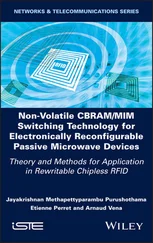In the 1920s, most aeroplanes were made of wood but fully metal construction was heavily researched. The switch to metal aeroplanes occurred before there was much evidence of their superiority, arguably because of beliefs about science and progress. Metal symbolised both science and progress, hence far more effort was expended developing and justifying metal aeroplanes than improving wooden ones. [21] . Eric Schatzberg, “Ideology and technical choice: the decline of the wooden airplane in the United States, 1920-1945,” Technology and Culture , Vol. 35, No. 1, January 1994, p. 34-69.
During the Vietnam war, US planners conceptualised the war in terms of science, technology, bureaucracy and management. These were all areas in which the US was superior, hence defeat was unthinkable. The conceptualisation of the war as technological led to the deployment of sophisticated weapons, contributed to the enormous human and environmental impact of the war (two million Vietnamese deaths), and helped obscure the real reasons for US defeat. [22] . James William Gibson, The Perfect War: Technowar in Vietnam (Boston: Atlantic Monthly Press, 1986).
In the case of the Strategic Defense Initiative, there were massive military funding influences on scientific research, but just as important were ideological factors. The massive funding boom for star wars helped to draw corporations into service to the US military and to weaken opposition to US military policy, especially by promoting the idea that this was a “defence” system. Thus, although star wars never came close to achieving its technological ambitions, it “worked” in both economic and political senses. [23] . Vincent Mosco, “The military information society and ’star wars’,” in The Pay-Per Society: Computers and Communication in the Information Age (Toronto: Garamond, 1989), pp. 131-172, also published in revised form as “Strategic offence: star wars as military hegemony,” in Les Levidow and Kevin Robins (eds.), Cyborg Worlds: The Military Information Society (London: Free Association Books, 1989), pp. 87-112.
On a wider scale, it can be argued that the US Cold War vision of global power on the basis of automated, centralised control both shaped the development of computers and was sustained by both the technology and symbolism of computers. [24] . Paul N. Edwards, The Closed World: Computers and the Politics of Discourse in Cold War America (Cambridge, MA: MIT Press, 1996).
Suppression of Challenges
Military funding, military applications and the training and employment of scientists and engineers are all influences that shape science and technology to be selectively useful for military purposes. Another influence operates in a different way, by negative rather than positive reinforcement: when a development occurs that challenges military priorities, it may be subject to attack. This process is not always straightforward, so it is worth looking at a few examples. In each of these cases, military influence is one among a number of influences on science and technology.
Lucas Aerospace is a large corporation based in the UK. Much of its work is for military contracts, specifically for aircraft. In the 1970s, workers at Lucas, concerned about loss of employment from declining military orders, developed an alternative corporate plan. [25] . Hilary Wainwright and Dave Elliott, The Lucas Plan: A New Trade Unionism in the Making? (London: Allison and Busby, 1982).
The alternative plan included a number of products that could be produced with the facilities and skills available at Lucas, but which were designed to serve “human needs” such as mass transit or mobility of disabled people. Note that the workers distinguished “human needs” from military contracts.
The management of Lucas consistently refused to accept any of the workers’ proposals, insisting on managerial prerogatives, and rejecting even those alternatives that were projected to make a profit. This stance by Lucas management was not taken at the behest of the military, but it certainly served military ends (as well as maintaining managerial control). If initiatives such as those by the Lucas workers had been successful and imitated widely, they might have been a threat to the usual acquiescent role taken by industry in fulfilling military orders, and also a threat to the achievement of military priorities for technological development.
In the 1980s, the US National Security Agency (NSA) attempted to put controls on mathematical research in cryptography, the study of codes. Before publication, cryptography research was expected to be cleared through the NSA. [26] . David Dickson, The New Politics of Science (New York: Pantheon, 1984), pp. 141-145.
In the 1990s, the NSA developed a cryptography system — including a computer chip, the “Clipper chip,” and an encryption algorithm, “Skipjack” — that would allow government agencies to read messages under certain conditions. Most computer network users strongly preferred encryption systems — of which a number were available — that could not be easily cracked by anyone. The US government banned export of encryption systems while promoting the Clipper chip. The primary stated justification for the Clipper chip was monitoring of criminals, but the role of the NSA showed the importance of military priorities. In this case, the alternative, a market of encryption systems useful for commercial or private purposes, was opposed by military interests. [27] . Lance J. Hoffman (ed.), Building in Big Brother: The Cryptographic Policy Debate (New York: Springer-Verlag, 1995).
Another example is nuclear technology, in which military and civilian applications have long overlapped. Nuclear power, inasmuch as it is perceived to be a civilian technology, helps to legitimate nuclear technology generally, including nuclear weapons. There are many cases of critics of nuclear power — especially scientists and engineers — who have been reprimanded, transferred, harassed, slandered and dismissed. [28] . Leslie J. Freeman, Nuclear Witnesses (New York: Norton, 1981); Brian Martin, “Nuclear suppression,” Science and Public Policy , Vol. 13, No. 6, December 1986, pp. 312-320.
Another dimension to this issue is the attack on alternatives to nuclear power, such as cutbacks on funding for solar energy. [29] . Daniel M. Berman and John T. O’Connor, Who Owns the Sun? People, Politics, and the Struggle for a Solar Economy (White River Junction, Vermont: Chelsea Green, 1996); Ray Reece, The Sun Betrayed: A Report on the Corporate Seizure of U.S. Solar Energy Development (Boston: South End Press, 1979).
There are not so many examples of attacks on critics within nuclear weapons programmes, probably because few weapons scientists are in a position to dissent openly and still have any chance of retaining their jobs. Andre Sakharov in the Soviet Union was a prominent critic who was sent into internal exile as a result. In the United States, Hugh DeWitt, a theoretical physicist at Lawrence Livermore National Laboratory where nuclear weapons are designed, has spoken out against government weapons policies and come under attack within the lab several times as a result. The importance of such cases is not so much their effect on the individual dissidents, but the example provided to others who might otherwise have considered speaking out themselves. Even a few cases of this sort send a strong message that it is much safer to work on the job as it is defined from above. [30] . Brian Martin, “Suppression of dissent in science,” Research in Social Problems and Public Policy, Vol. 7, 1999, pp. 105-135.
In this way, conformity to military priorities is maintained.
Читать дальше












